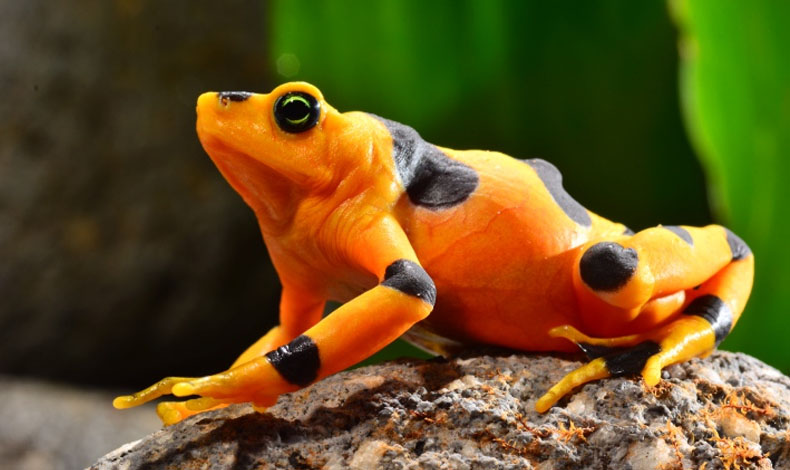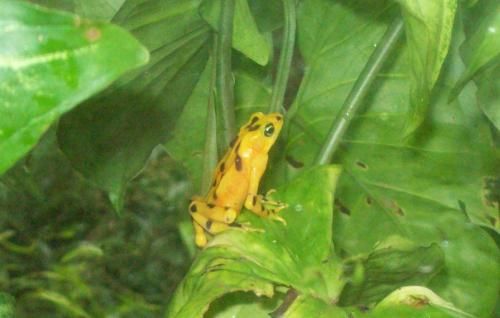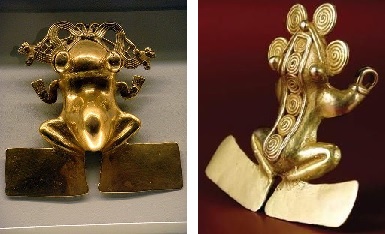
The Golden Frog of Panama (Atelopus zeteki) is a small species of anuran amphibian of the Bufonidae family (the typical toads), which is endemic to Panama, specifically to El Valle de Antón (Coclé province) and the Altos de Campana (province of Panamá Oeste), possibly currently extinct in the wild.
The adult male has measurements of 35 to 40 millimeters, with a weight of 3 to 5 grams. The adult female ranges between 45 and 55 millimeters and 4 to 7 grams in weight. They live in tropical and humid forests in the vicinity of mountains, especially associated with streams, where the male can grow up to 48 millimeters and exhibit a weight of 12 grams, and the females 63 millimeters and up to 15 grams.

Behavior
The golden frogs of Panama communicate through body language. The golden frog appears to socialize with other frogs using guttural sounds and hand movements. These movements were investigated by a group of herpetologists and appear to be used for various social situations, from friendly to hostile encounters. An artificial frog was used that performed hand movements, and after repeating it, the real frog attacked.
State of conservation
The species was last filmed in the wild in 2007 by the BBC’s Natural History Unit’s series “Life in Cold Blood by David Attenborough.” The few remaining specimens have been kept in captivity and the filming location was kept secret to protect them from potential poachers.
Amphibian populations, including the golden frog, suffered significant declines, possibly due to infection caused by the fungus Batrachochytrium dendorbatidis. Other influencing factors have been habitat loss and pollution.
In culture
The Panamanian golden frog has appeared on Panamanian lottery tickets and is considered by some to be a national symbol of Panama. Legends tell that frogs turn solid gold when they die.

A pre-Columbian legend that emerged in the central lands of Panama affirmed that whoever saw or managed to own a golden frog would enjoy good fortune.
Reproduction
The male approaches the female performing a mating ceremony, then he hugs the female so that she can deposit the eggs in the aquatic environment for the male to fertilize. Once the eggs were fertilized, only 10 to 15% would not be able to hatch. The size of the bodies of the tadpole is about 5.8 mm wide, it is 4.3 mm and 12.2 mm long, unlike the larva that has an ovoid-shaped body, these are white before the days of hatching and acquire their coloration after a few days. They begin with a brown to black coloration, their belly turns a transparent gray color. Later, in their metamorphosis, they lose their golden color and they begin to appear in silhouettes in the form of dark green or dark brown freckles and finally they acquire their intense yellow or bright gold color with black spots in their subadult stage of age.
